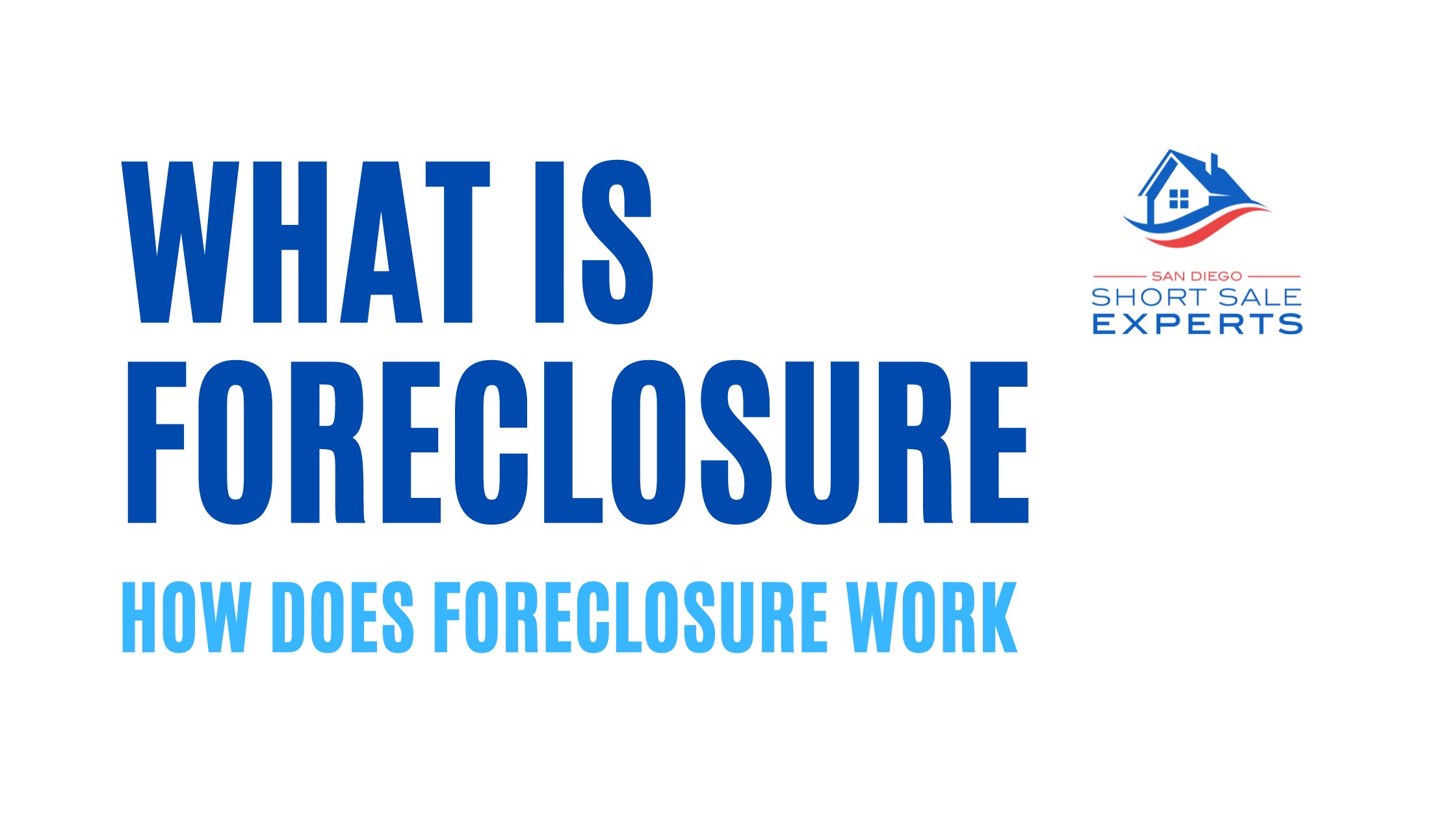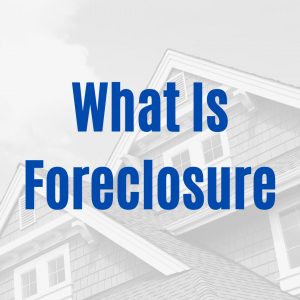
Table of contents
What is Foreclosure?
Foreclosure is the legal process by which a lender repossesses a property from a borrower who has defaulted on their mortgage payments in order to recoup the outstanding balance on their mortgage loan. This can happen either through a court-ordered sale of the property or through the lender taking possession of the property themselves.
When you purchase a house with a mortgage, technically the bank owns the house as collateral while you pay off the mortgage. If you make payments on time month after month, no problem. If you miss a payment and the bank is no longer receiving the money it was promised, it can use your house to secure the rest of the money that it is owed.
In this post, we’re going to explore the foreclosure process from brand new mortgage to final trustees sale. We’ll also talk about things you can do during the foreclosure process to save your house.
How Foreclosure Works
When a homeowner fails to make their mortgage payments, the lender may initiate foreclosure proceedings. This is a legal process whereby the lender tries to regain possession of the property so that they can sell it and recoup their losses.
The foreclosure process can vary slightly from state to state, but generally, the lender will first send a notice of default to the borrower. This notice gives the borrower a certain amount of time to catch up on their payments. If they are unable to do so, then the lender may begin the foreclosure proceedings.
In some states, this will be a “judicial foreclosure“, and the lawsuit will go through the court system, and if the court rules in favor of the lender, then they will issue a foreclosure order. This order allows the lender to sell the property at auction in order to repay the balance that is owed.
Other states allow for a “non-judicial foreclosure“, which does not need to go through the court system. A non-judicial foreclosure also allows a lender to take possession of the property in order to recoup their losses. (California is a non-judicial foreclosure state.)
The foreclosure process can be very complicated and it is important for borrowers to understand all of their rights and options before it begins. Borrowers who are facing foreclosure should contact a housing counselor or an attorney as soon as possible to get help understanding their options and protecting their rights. Contact us today at 619-777-6716 or submit your information on our contact form and we will be in touch to discuss your options and how we can help.
Can You Stop A Foreclosure Auction?
Yes, you can stop a foreclosure auction by filing for bankruptcy or, working with an attorney that has other options to stop the foreclosure auction. Bankruptcy will give you an automatic stay on the foreclosure proceedings.
If you need to stop your foreclosure immediately, we have attorneys that can stop your foreclosure all the way up to the week of the scheduled sale. Contact us today at 619-777-6716 or submit your information on our contact form and we will be in touch to discuss your options and how we can help.
How to Stop Foreclosure
If you are facing foreclosure, it is important to take action as soon as possible. There are a number of ways to stop foreclosure, but the most effective way will vary depending on your individual situation. Some options for stopping foreclosure include:
- contacting your lender directly to discuss your options
- seeking out government assistance programs
- working with a housing counselor or other professional
- negotiating a loan modification or other type of payment plan
- selling your home through a short sale or deed in lieu of foreclosure
Each of these options has its own advantages and disadvantages, so it is important to consult with a professional before taking any action. Taking swift and decisive action is the best way to stop foreclosure and protect your financial future.
Options to Stop Foreclosure
If you struggle to make payments on a house and are in the middle of the foreclosure process, you have a few options. In the California foreclosure process, you have until right before the trustee’s sale to save your house. Usually, that gives you at least 6-8 months after the first missed payment to pursue one of these options:
Loan Modifications
The best way to prevent foreclosure while remaining in your house is a loan modification that allows you to change your mortgage payments. A loan modification is a more permanent solution for borrowers who are struggling to make their mortgage payments. With a loan modification, the terms of the loan are permanently changed in order to make it more affordable for the borrower. This can include extending the term of the loan, lowering the interest rate, or changing the type of loan.
Forbearance plans and loan modifications allow you to get your payments back on track. Usually you can apply and get approved for a modification only if you experienced a financial hardship that has fundamentally changed your ability to pay the mortgage.
You will not be approved if you could still make your full payments, and you also will not be approved if you are not able to make any payments at all. Loan modifications are useful for both lenders and borrowers when lenders think that a loan modification will realistically prevent a foreclosure. If they are not convinced that you are able to continue making payments, they will continue with the foreclosure process, or ask you to pursue a short sale.
Forbearance
Forbearance is typically used as a short-term solution to help borrowers who are struggling to make their mortgage payments. This can be due to financial hardship, illness, or other reasons. With forbearance, the lender agrees to temporarily lower or suspend the borrower’s mortgage payments. This gives the borrower some time to get back on their feet financially.
Short Sale
Short sale allows you to sell your house to pay off the remainder of the mortgage, and is a good option when the property value has remained high but you don’t think you’ll be able to meet the demands of the mortgage anymore. It allows you to sell off the house and pay the mortgage, avoiding foreclosure.
Deed in Lieu of Foreclosure
A Deed in Lieu of Foreclosure is similar to a foreclosure, but it happens a lot quicker. If you’re afraid that you will not be able to meet the demands of the lender and there is no way to avoid foreclosure, you can negotiate a deed in lieu to willingly give up the house. The only benefit is that you save some of your credit score and can move on more quickly.
Filing for Bankruptcy
If other options are exhausted, bankruptcy can help you save your house and reduce debt that you don’t need. All unsecured debts go away and you work with your creditors to establish a new payment plan for the secured debts that you owe. The benefit of filing for bankruptcy is that it puts a freeze on the foreclosure process, so that your lender cannot proceed until bankruptcy is completed. Additionally, bankruptcy usually gives you a chance to keep your house and renegotiate your mortgage payments.
The Foreclosure Process in California
Nonjudicial Foreclosure
The vast majority of foreclosures in California go through the nonjudicial foreclosure process. It’s quicker, easier, and less complicated for both lenders and borrowers.
Missed a Payment
The foreclosure process legally cannot begin until there is a payment on the mortgage missed. Depending on the policies of the lender in question, you may get a reminder and a grace period after you’ve missed a payment. You should get off with just a late fee. If you’re able to make it up the next month, or even in the next couple months, you should be fine. Usually the missed payment won’t turn into the foreclosure process until 90 days after you’ve missed a payment and have failed to bring your balance up to current.
Notice of Default
After 90 days where your loan balance is behind, most lenders will begin to move forward with a notice of default. The notice of default can be filed after 120 days, according to the Consumer Finance Protection Bureau. Once the official notice is filed, they must notify you that you’re in default within 10 days of filing the notice.
At this point, you’re currently considered in default of your mortgage. If you can pay the full balance that you’re behind on, then you can get out of default. Returning to our beautiful $500,000 home, let’s say that we’ve come up $1,000 short in 3 consecutive months. We’re now $3,000 behind on the mortgage, and probably owe some additional interest and fees, so let’s just say we owe $3,500. If you are unable to pay the $3,500 after receiving the notice of default, then the home will continue to be in default. Additionally, our balance will go up every time that another monthly payment is due. Our monthly payments were around $2,300, so the default increases by that amount every time another monthly payment is due.
When you receive a notice of default, you get an additional 90 days to cure the default and bring the loan back to current. Because you’ve probably already waited a few months before the notice of default is given, you probably have at least a half a year to bring your mortgage back to current. It can be tough, however, because the missed payments and interest can easily add up. Plus fees and processing, you can easily find yourself buried under the missed payments. If you can get your finances in order and bring the payment current before the 90 days are up, you can avoid foreclosure.
Notice of Trustee Sale
In the nonjudicial foreclosure process, the notice of trustee sale is the final move made before your house is auctioned off and the foreclosure process is complete. The auction is the bank’s way of recovering it’s resources and the amount of money that it expected to make off the loan. Homes can be sold for less than their value at times if the bank just needs to recover a little bit less.
Once the bank has set a date for the auction, you’ll be notified in the mail. Traditionally, you have until about 5 days before the day of the auction to make payments, cure the default, and end the foreclosure process. Trustee sales must be set 21 days after the notice is given, so you may only have a couple of weeks at this point to save the house.
Auction
Once the auction goes through, the trustee sale is complete and the home is foreclosed. You no longer own the home and the money that you sunk into the mortgage is now lost.
Judicial Foreclosure
In California, judicial foreclosure is actually quite rare, because nonjudicial foreclosures are usually easier. The only reason that a bank would take you through judicial foreclosure is if they are trying to recover the deficiency of the home. For example, if the property value of our $500,000 example house goes down to $400,000 and you’ve only paid the bank $50,000 in mortgage payments, then you might have a deficiency of $50,000. In a nonjudicial foreclosure, there’s nothing a bank could do to recover that money. But in judicial foreclosure in California, if the house is not your primary residence, the bank could recover the $50,000 through a deficiency agreement. The reason that banks in California don’t often pursue judicial foreclosure is that they cannot collect deficiency on a primary residence.
Stop Foreclosure
If you are behind on your mortgage payments, there are multiple options available to stop the foreclosure process. If you need to stop your foreclosure immediately, we have attorneys that can stop your foreclosure all the way up to the week of the scheduled sale.
The most important thing is that you do not wait. Each day is critical and the more time that you have, the more options will be available.
Contact us today at 619-777-6716 or submit your information on our contact form and we will be in touch to discuss your options and how we can help.





